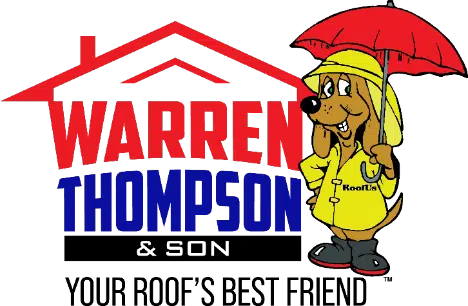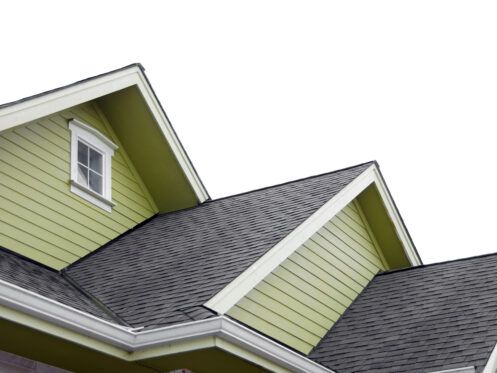Are you looking to upgrade the look of your home by replacing your exterior siding? Re-siding your house is a great way to increase its value and curb appeal. It can also save you money in the long run by making your home more energy-efficient.
There are a wide variety of styles and types of siding available, and the type you choose will impact how much the project costs, how long the siding lasts and how your home looks. In this article, we’ll explain the pros and cons of the most popular types of residential siding to help you make a more informed decision on which option is best for your home.
Vinyl
Vinyl siding first started to be used in the 1950s and was introduced as a superior alternative to aluminum siding. Aluminum siding was extremely popular up until the 1970s or so, but it is something that’s very rarely used these days. The reason is that vinyl siding provides a more beautiful, stylish look while having many major advantages over aluminum.
Aluminum siding is prone to fading, dents, scratching and storm damage, and it also makes a lot of noise during storms that produce strong winds, rain and hail. Another reason that it has been mostly phased out is that the price of aluminum has continued to increase, making aluminum siding much more expensive than most other siding options.
Vinyl is now by far the most popular residential exterior siding option for American homes. Although the cost to install vinyl siding can sometimes be a bit higher than with other options such as wood, it is still often the least expensive and most cost-effective option overall. This is partly because it is quite strong and durable, has an impressive lifespan and requires almost zero maintenance.
When installed properly, vinyl siding should last for decades. Another advantage is that vinyl and polymer siding comes prefinished, which isn’t the case with most other options.
Polymer
The terms vinyl and polymer siding are sometimes used interchangeably even though they’re not the same thing. Both types of siding are essentially plastic, but each is made out of a different material. Vinyl siding is made of PVC (polyvinyl chloride), whereas polymer siding is made using polypropylene resin.
Polymer siding tends to be thicker than the more basic economy vinyl siding, which makes it more durable and better at insulating. Polymer siding is also available in more styles since the plastic can be molded to give it the appearance of real wood.
As with vinyl, polymer siding is available in a huge range of color options and is highly resistant to fading. If your siding ever starts fading or you want to change the color of your home, the siding can also easily be painted.
The main drawback to polymer siding compared to vinyl is that it is quite a bit more expensive. However, it also tends to last longer, look more stylish and is much more environmentally friendly. This is partly because most polymer siding is made at least partially out of recycled materials and can be fully recycled. When PVC siding is manufactured or burns, it also releases lots of harmful carcinogens and pollutants.
Fiber Cement
As the name suggests, fiber cement siding is made out of cement that is mixed with sand and cellulose to create an extremely hard, strong and durable material. Most fiber cement siding is made to look like real wood, and the pieces typically come primed and then can be painted any color you wish after installation. You can also purchase fiber cement siding that has already been painted, which can sometimes cut down the total installation cost and also save time.
Due to its strength and durability, fiber cement siding typically comes with a longer warranty than other siding types. Most types of fiber cement siding have at least a 30-year warranty, and some companies warrant their products for 50 years. Many types of painted fiber cement siding will also come with a 15-year warranty on the finish that covers against chipping, peeling, fading or cracking.
Although it has the look of real wood, fiber cement siding is non-combustible and fully immune to pests like squirrels and woodpeckers and also wood-boring insects like termites. It also won’t shrink, crack or warp like wood siding. Fiber cement siding is extremely weather-resistant and can withstand the impact of flying debris and hail without being damaged.
Although fiber cement siding costs more than vinyl, it tends to be less expensive than wood or polymer siding. However, you should normally expect to pay about the same for the installation as you do to purchase the siding. One reason is that it is quite heavy and not as easy to install as some other options. It also requires specialized tools and extra safety precautions since cutting it produces dust that contains crystalline silica, which is extremely harmful if breathed in.
Natural Wood
Natural wood siding used to be extremely popular, but it isn’t that common anymore. It can sometimes be a decent choice if you prefer the look of real wood, but there are generally better options that can provide a similar appearance. Wood siding is typically the easiest and thus cheapest option to install, but it also typically costs a lot more than most other types of siding. It also requires lots more maintenance and needs to be repainted often and typically doesn’t last as long since the pieces of wood experience lots of weathering.
Composite or Engineered Wood
Composite and engineered wood siding was first introduced in the 1990s and has quickly grown in popularity. Engineered wood siding is made from wood fibers that are bound together with resin. Composite siding uses non-wood materials and polymers that are molded together. Both composite and engineered wood siding offer the look of real wood without all of the drawbacks.
These types of siding typically contain chemicals like zinc borate that help to prevent it from rotting or decaying. This allows it to last an extremely long time, which is why many companies provide a 50-year warranty on their products. Composite and engineered wood siding are more expensive than vinyl but cost less than real wood. These types of siding also have some advantages over fiber cement, as they are more damage and impact-resistant and easier to install.
At Warren Thompson & Son Roofing & Siding, we’ve been providing expert services to New Jersey and Pennsylvania customers in Alpha and the greater Philadelphia area since 1973. We specialize in siding installation and repairs, and our team can explain your different siding options and help you choose the right one. We offer expert gutter installation services plus roof repairs and replacement for residential and commercial customers.
Our extreme attention to detail helps us stand out among our competitors and ensures that all the work we perform is done properly and looks beautiful. We always use the highest-quality products and work to ensure that each customer is fully satisfied. For more information on your siding replacement options or to schedule an appointment to get an estimate, contact our expert team today.

